calsfoundation@cals.org
Piggott (Clay County)
County Seat
| Latitude and Longitude: | 36º22’58″N 090º11’26″W |
| Elevation: | 302 feet |
| Area: | 5.36 square miles (2020 Census) |
| Population: | 3,622 (2020 Census) |
| Incorporation Date: | September 3, 1891 |
Historical population as per the U.S. Census:
|
1810 |
1820 |
1830 |
1840 |
1850 |
1860 |
1870 |
1880 |
1890 |
1900 |
|
– |
– |
– |
– |
– |
– |
– |
– |
– |
597 |
|
1910 |
1920 |
1930 |
1940 |
1950 |
1960 |
1970 |
1980 |
1990 |
2000 |
|
1,150 |
2,016 |
1,885 |
2,034 |
2,558 |
2,776 |
3,087 |
3,762 |
3,777 |
3,894 |
|
2010 |
2020 | ||||||||
|
3,849 |
3,622 |
Piggott, a thriving agricultural town in northeast Arkansas, has several claims to fame that have left their mark on the community. Among them are its relationship with American writer Ernest Hemingway, its selection as a site for filming the classic movie A Face in the Crowd, and its reputation as a “marrying mecca.”
Established in 1882, the town had its origins in 1873, when Dr. James A. Piggott and some of his pioneering neighbors from Dow, Illinois, settled near the current town site. While Piggott was respected as a doctor, he endeared himself even more to his neighbors by successfully petitioning for a post office for the remote settlement. In those days, the area was dense forest broken only by scattered clearings, and the journey along Crowley’s Ridge to the nearest post office was arduous.
By 1882, railroad tracks were being laid throughout the region to haul out the valuable timber, and a town grew up around the tracks two miles southeast of Piggott’s earlier settlement. Originally known as Huston in honor of one of its residents, another doctor named Sam Huston, the name was changed to Piggott a year later when the nearby post office was relocated to the town.
With the shift of population toward the railroad, Boydsville, the Clay County seat for the Eastern District that was located twenty miles southwest, was no longer convenient. An 1891 election awarded the seat to Piggott.
The town went through a major growth spurt after Paul and Mary Pfeiffer moved to Piggott from St. Louis with their children in 1913. Pfeiffer eventually acquired 63,000 acres of land in the area, which he divided into farmsteads and rented to tenants recruited from around the country.
When the Pfeiffers arrived, the town featured a downtown square built around a grand two-story brick courthouse. Limited retail establishments surrounded the square, with plenty of vacant lots to support traveling tent shows, medicine shows, candy vendors, and parking for horses and wagons. Most of the businesses around town were agriculture related, such as farm implement dealers, harness and leather shops, a handle mill, a grain mill and elevator, and a stave mill. The Palace Hotel across from the depot at Front and Main, built in 1912, boasted fourteen well-ventilated rooms with all the modern conveniences.
Piggott was primed for growth and began to develop rapidly through the leadership of the Pfeiffers and others. The Pfeiffers had the first electric stove and electric refrigerator in town and later helped make electricity available to many Piggott residences. A 1915 ordinance created a Water Works Improvement District, and a 1919 ordinance created a Sewer Improvement District. The purpose was to make these services available to all real property owners within the corporate limits.
Until the 1930s, U.S. Highway 62, which became Main Street, was the only paved street. Other streets and sidewalks were paved during the 1930s Works Progress Administration (WPA), with financial support from Paul Pfeiffer to help citizens pay their assessed share.
Another major contribution during the Depression era was a post office mural, titled “Air Mail,” painted by Daniel Rhodes as part of the New Deal effort to put people back to work.
Leslie Biffle was a leader in the democratic party of Arkansas and served as a U.S. senator in the 1940s and 1950s.
Despite the Pfeiffers many civic and philanthropic efforts in Piggott, they are perhaps best known as the parents of Pauline Pfeiffer, who married Ernest Hemingway. During the Hemingways’ marriage, from 1927 to 1940, they traveled regularly to Piggott, and Pauline’s family converted a barn behind their house into a studio to give Hemingway privacy for writing. It was there that he wrote parts of A Farewell to Arms and other short stories. Hemingway had mixed feelings about Piggott, including a dislike of the heat, but he wrote in the February 1934 issue of Esquire magazine that one of the places he would rather be, other than Paris, was “Piggott, Arkansas in the fall.”
Today the Pfeiffer property is owned by Arkansas State University and operates as the Hemingway-Pfeiffer Museum and Educational Center. The museum focuses on the 1930s and serves as the northern anchor for the Crowley’s Ridge Parkway, a National Scenic Byway that traverses eight counties in eastern Arkansas. A companion attraction across the street, the Matilda and Karl Pfeiffer Museum and Study Center, focuses on Pauline Hemingway’s brother and sister-in-law and their varied interests, including a major mineral collection.
The Piggott National Guard Armory was built in 1956 and was officially closed in 2005. The following year, it was listed on the National Register of Historic Places.
Hollywood put Piggott on the map again when A Face in the Crowd premiered in 1957. Director Elia Kazan and writer Budd Schulberg selected the town as an attractive, bucolic small town in mid-America. The movie marked the film debut of Andy Griffith and Lee Remick and also starred Patricia Neal. Today, the town’s role in the film is commemorated with exhibits in the visitor center, as well as the town’s motto: “Piggott: Where You’re Not Just a Face in the Crowd.”
A mural on the town square, painted by Rector artist Carolyn Caldwell, celebrates not only the Hemingway and A Face in the Crowd connections but also its role as a marrying mecca. In the late 1940s and early 1950s, when most states had a three-day waiting period for marriage licenses, Arkansas had a law that the waiting period could be waived in special cases. The Clay County judge took the position that all marriages were special cases, and people flocked to Piggott from neighboring states to be married. During the peak year of 1950, there were 5,960 marriages in Piggott, more than twice the entire population.
On July 30, 1970, a C-130 transport plane crashed out a mile west of Piggott, killing all six men aboard.
Today a more modern brick courthouse replaces the historic 1899 structure, but the courthouse square remains active, with shops, restaurants, and other businesses. The town has restored its Cotton Belt depot for use as a visitor center and initiated a streetscape program that includes a Piggott Historical Walkway.
Piggott, recognized since 1997 as an Arkansas Community of Excellence, boasts eighteen churches, a large community park and amphitheater and a modern community center with a gym, a walking track, racquetball courts, a computer room, and kitchen and dining areas. The city-owned hospital, airport, and school system have undergone expansion to keep up with the needs of the twenty-first century, and the elementary school and high school are accredited by the North Central Association of Colleges and Schools. Though it remains rural in nature, Piggott has expanded its economic base beyond agriculture, and its industrial area includes Aerial Bouquets, a family-owned business that manufactures and distributes mylar balloons and floral products to florists and supermarkets around the country, and a 330,000 square foot wood plant facility for L. A. Darling Co., headquartered in Paragould and one of the nation’s largest manufacturers of wood and metal store fixtures.
To celebrate its heritage, Piggott annually hosts festivals and special events, including the annual Fourth of July Homecoming Picnic and Parade, the Christmas Lights Festival, a Heritage Park Festival, a Spring Festival, and a Rod Run featuring antique cars.
For additional information:
Barnes, Cathy. Life and Times from the Clay County Courier Newspaper, 1893–1914. 11 vols. Conway, AR: Arkansas Research Inc., 2000.
The Goodspeed Biographical and Historical Memoirs of Northeastern Arkansas. Easley, SC: Southern Historical Press, 1978.
Hemingway, Ernest. “A Paris Letter.” Esquire. February 1934, p. 22.
Webb, Robert T. et al, eds. History and Traditions of Clay County. Mountain Home, AR: Shiras Bros. Print Shop, 1933.
Wright, Victor C. History of Our County Seats: An Authentic Record of the Establishment of the Local Governments in Clay County, Arkansas, as Obtained from the Office of the Secretary of State, Official County Records, and Authentic Publications. Corning, AR: Clay County Courier, 1956.
Ruth A. Hawkins
Delta Heritage Initiatives
Arkansas State University
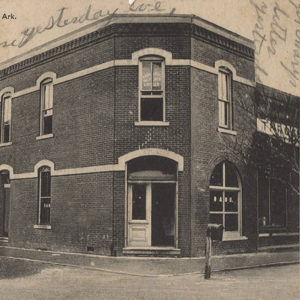 Clay County Bank
Clay County Bank  Clay County Courthouse
Clay County Courthouse 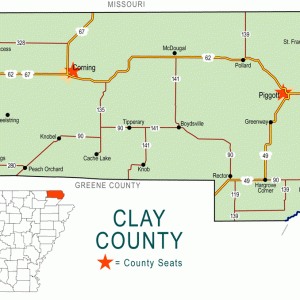 Clay County Map
Clay County Map  Downtown Piggott
Downtown Piggott  A Face in the Crowd
A Face in the Crowd  Hemingway-Pfeiffer Museum
Hemingway-Pfeiffer Museum 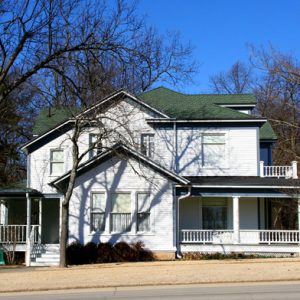 Hemingway-Pfeiffer Museum
Hemingway-Pfeiffer Museum  Hemingway-Pfeiffer Museum Educational Center
Hemingway-Pfeiffer Museum Educational Center 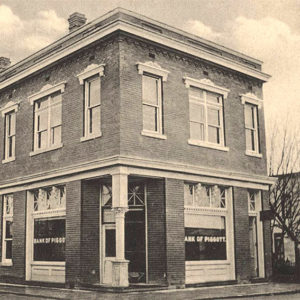 Piggott Bank
Piggott Bank  Piggott Baptist Church
Piggott Baptist Church 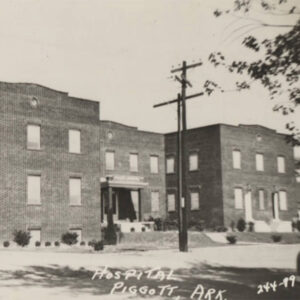 Piggott Hospital
Piggott Hospital 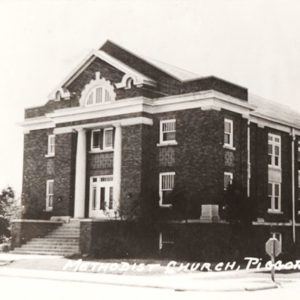 Piggott Methodist
Piggott Methodist 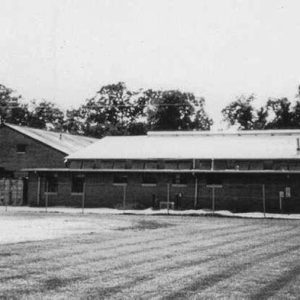 Piggott National Guard Armory
Piggott National Guard Armory 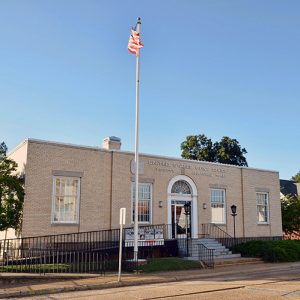 Piggott Post Office
Piggott Post Office 




The judge that believed all marriages were special was Judge Thomas Arnold French Sr. He passed the bar and became a lawyer without the benefit of ever attending college or law school.
My father (Douglas Zimmerman Walker) had a younger brother (Robinson Cornell Walker) who left Piggott to serve in World War I. He was killed in action in Verdun, France. The American Legion post in Piggott was named for Robinson Walker. Robinson’s mother (Huldah Zimmerman Walker) was a Gold Star mother who joined other mothers (at the government’s expense) in visiting their sons’ graves. The Walker family moved to Piggott from Portageville, Missouri, where Mr. Walker published the Portageville Critic.